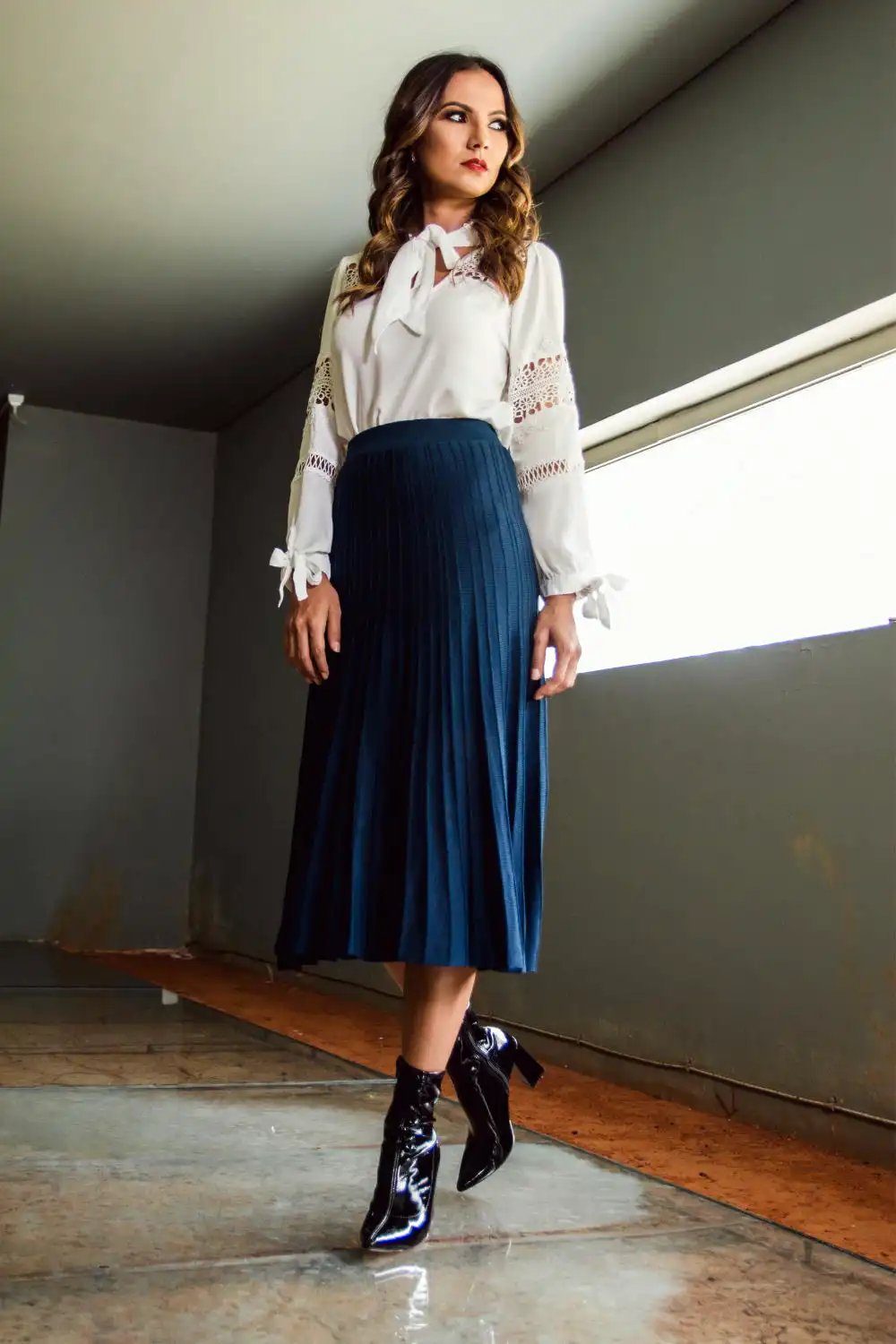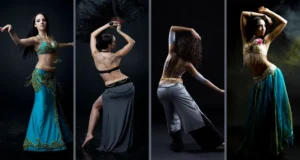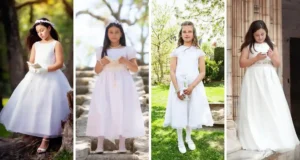Modestly speaking, skirts have a long history in religious traditions. While beliefs vary, some faiths hold that skirts represent feminine modesty and virtue. This rings true for certain denominations of Christianity, Judaism, Islam, and more. But do these doctrines still hold up a hemline today? Let’s slip into something a little more holy and take a peek underneath the petticoats of religions where females wear only skirts.
First up is Apostolic Pentecostalism, a sect of Christianity with strict rules on women’s attire. Followers forbid pants, short hair, and makeup on ladies – leaving skirts as the sole bottom option. They believe God designed gender-specific garments, so sporting trousers trespasses on male territory.
Similarly, Orthodox Judaism bars women from wearing pants, as they are considered manly apparel. Slacks are a no-no, but modest knee-length skirts cut. Much like Pentecostals, Orthodox Jews interpret scripture as God assigned specific clothing to each sex.
While not universally enforced, Islam also traditionally reserves skirts and dresses for the fairer sex. Many Muslim women don skirts over pants for extra modesty. The Quran commands loose, non-revealing clothing as a show of piety.
Though cultural tides are shifting, these faiths still cling to skirts-only policies for female modesty. While beliefs are deeply ingrained, younger generations increasingly bend the rules with pants and shorts. But for many devout followers, bearing their beliefs below the belt, skirts remain the holy grail – or shall we say, holy garment – of religious fashion.
What are the religions where females wear only skirts?
Apostolic Pentecostal
Many religious groups require women to wear skirts as part of their modest attire guidelines. The most notable example is Apostolic Pentecostal churches, where women are expected to wear only long skirts or dresses. Fabric choices are typically limited to more modest options like cotton and linen.
Skirts are seen as the more spiritual and traditional choice, reflecting the beliefs that women should dress to avoid bringing attention to themselves. Pants, shorts, and other styles are considered immodest and inappropriate.
Beyond the clothing itself, Apostolic Pentecostal women are also expected to maintain an overall modest appearance by minimizing jewelry, makeup, and other adornments.
The lengthy skirt requirement is firmly rooted in the Apostolic Pentecostal interpretation of scriptural passages that call for women to dress modestly.
Skirts reaching below the knee and made of loose, non-revealing fabric are seen as the most aligned with their spiritual values of humility, traditional gender roles, and divine modesty guidelines.
For Apostolic Pentecostal believers, following the skirt requirement and broader dress code is viewed as an important part of living out their religious beliefs.

Amish
Among the many religions with dress codes requiring women to wear skirts instead of pants, the Amish stand out for their particularly strict guidelines.
The long dresses and modest skirts Amish women wear reflect the community’s value of humility and separation from mainstream influences. Covering the body and abstaining from clothing trends shows restraint and reminds followers of spiritual priorities.
Amish clothing rules aim to help women focus less on vanity and more on relationships within the community. Wearing dresses helps divide gender roles clearly, with men dressing plainly but practically in pants for work and women adorning the more decorated but less mobile skirt.
Amish skirts and dresses must fall below the knee and cover the shoulders and upper arms. Fabric choices are limited to simple solid colors, and modern materials like synthetics are avoided. Women do not wear any jewelry, makeup, or hairstyles seen as vain.
By wearing plain, traditional clothing, Amish women signal their commitment to Amish values of modesty, discipline, and humble living.
Covering the legs, seen as less practical, serves as a visual reminder to remain separate from the physical desires of mainstream culture. The skirt has become a central component of the Amish religious identity for women.
Mennonite
For Mennonite women, wearing long skirts or dresses is a key part of their religious tradition and modest dress code.
Their plain clothing reflects values of humility, spiritual devotion, and separation from worldly vanities. Mennonites aim to dress in a practical, simple style that de-emphasizes outward appearance.
Mennonite women’s skirts and dresses typically fall below the knee, are made with solid-colored fabrics, and avoid decorative details. Pants or stylish clothing would be seen as distracting from their faith and values of modesty.
While head coverings are not required, many Mennonite women wear plain white or black bonnets to express their faith and tradition. Like shunning jewelry and makeup, covering the hair represents the willing sacrifice of self-adornment for spiritual purposes.
For conservative Mennonite communities that require women to adhere most strictly to the dress code, skirts, and dresses serve as an important visual symbol of faithfulness.
Wearing only ankle-length skirts distinguishes Mennonite women as upholding the values of humility, moral discipline, and separation from mainstream aesthetics that prize revealing clothing.
The long skirts and simple dresses of Mennonite women outwardly reveal their inward devotion to living modest, God-focused lives according to their religious and cultural traditions.
United Pentecostal Church
Within the United Pentecostal Church, some branches require women to adhere to a strict dress code that mandates wearing only skirts or dresses.
This dress code focuses on modesty as a spiritual virtue and symbol of faith. Women’s garments must be long, with fabric covering the body fully from shoulders to below the knee. Pants, shorts, and other styles seen as revealing or provocative are forbidden.
The skirt requirement for United Pentecostal Church women represents strict adherence to traditional gender roles that prescribe women dress in a restrained, non-assertive manner.
Wearing unconfining skirts instead of versatile, concealing pants shows religious devotion to humble living according to longstanding cultural expectations.
United Pentecostal Church women’s skirts must typically reach the ankle to ensure the greatest body concealment. Fabrics are limited to plain, loose weaves with minimal textures or patterns. Makeup, jewelry, and styled hair seen as vain or attention-seeking also violate the modest spirit of the dress code.
By wearing ankle-length skirts made from simple fabrics and minimizing adornments, United Pentecostal Church women outwardly express their inward commitment to spiritual principles of humility, purity, and self-restraint central to the denomination’s theology.
The long skirt visually symbolizes separating oneself from worldly desires that could disrupt one’s devotion to God.
Quaker
For Quaker women, wearing plain ankle-length dresses reflects their faith’s emphasis on modesty, humility, and spiritual simplicity over material excess and outward appearances.
Quaker dress standards require women to refrain from wearing pants in favor of skirts as a visible symbol of putting spiritual values above worldly desires. Plain-colored, loose-fitting dresses that fully cover the body promote non-conformity to fashion and dedication to a God-centered life.
By adhering to the dress code of ankle-length gowns made from solid-colored fabrics, Quaker women demonstrate their commitment to living a lifestyle aligned with Quaker values of moderation, restraint, and moral goodness over adornment and flamboyance.
The ankle-length skirt is a membership badge, indicating one’s embrace of Quaker spiritual virtues such as humility before God and moral straightforwardness.
While no longer strictly enforced, Quaker women’s skirt tradition persists as a cultural symbol representing the Religious Society of Friends’ rejection of materialism and emphasis on cultivating an inner spiritual light over outward appearances.
Even as Quakers have increasingly blended into mainstream society, the ankle-length dress continues to signify Quakers’ determination to promote virtuous inner qualities through simple outer garments focused more on functionality than attractiveness.

Sikhism
For Sikh women, the traditional salwar kameez represents cultural pride, religious sentiment, and feminine grace.
The long, loose tunic and trousers allow freedom of movement while retaining modesty and dignity. The bright colors and beautiful embroidery depict the cheerful, artistic side of Sikhism as a faith.
While some younger Sikh women now wear Western attire, many embrace the salwar kameez as a symbol of their identity. The trousers provide practical benefits, but the knee-length tunic has the fluidity and grace of a skirt, reflecting traditional femininity.
For Sikh women who choose to wear the salwar kameez, it exemplifies the balance and harmony within their faith. The garment’s ornamentation shows the celebration of life and beauty within Sikhism, while the concealing fabric maintains humility and modesty as virtues.
Even with optional headscarves, the vivid salwar kameez remains conspicuous as a Sikh woman’s garment. Its radiant color, intricate embroidery, and feminine fit represent the spirit of Sikh women who uphold the faith’s principles of equality yet nurture grace within the tradition.
The very sight of a Sikh woman in her salwar kameez evokes sentiments of maternal love, cultural continuity, and divine oneness.
Hinduism
For Hindu women who choose to wear only the traditional sari, the long, flowing garment represents devotion to cultural and spiritual values and femininity.
The sari’s pleats and wrap style require skill and patience to wear properly, demonstrating grace and patience, considered laudable feminine qualities within Hinduism. The ornately designed silk or cotton fabrics express a woman’s creativity and individuality while remaining modestly concealing.
The sari-clad Hindu woman personifies culture and religion intertwined. Wearing a sari serves as a living symbol of Hindu womanhood for those who value connecting with the faith’s ancient roots and their community’s traditions. It visually manifests the blend of strength, warmth, and patience that characterizes Hindu femininity.
Wearing a sari becomes an act of spiritual devotion, illustrating how devotion to cultural tradition supports rather than hinders an orthodox Hindu woman’s religious development.
Practicing the art of properly wearing a sari shows tenacity and attention to detail, reflecting well-practiced spiritual discipline – virtues that lead to ultimate enlightenment within Hinduism.
For Hindu women who wear only the traditional sari, the garment serves as much more than just cloth. It becomes a sacred symbol of feminine virtues, representing qualities such as modesty, grace, and devotion.
Additionally, wearing the sari is a way for these women to honor their community’s cultural longevity and rich heritage, connecting them with their ancestors and their shared history.
Most significantly, the sari becomes an external reminder of their inner spiritual development, signifying their journey towards moksha, the ultimate goal of achieving the soul’s final liberation from the cycle of rebirth.
Jainism
For Jain women who
By choosing the plain, unadorned white sari, Jain women outwardly adhere to the principles of simplicity and non-attachment central to Jainism.
They seek to avoid brown or dyed colors that may contribute to harm and pollution in the world by complicating production.
The loose, concealing drape of the sari and dhoti symbolize Jain’s teachings of nonviolence by renouncing tight and revealing clothes that may stimulate excessive desire or discomfort in others. Their plain white garments denote humility and spiritual focus rather than vanity and ornamentation.
By devoting themselves to the practice of wearing the simple white sari or dhoti daily, Jain women cultivate the virtues of detachment, self-discipline, and compassion central to Jain teachings.
They learn the metaphorical lesson of renouncing complicated wrappings and coverings to reveal the soul illuminated with wisdom and purity.
For Jain women, wearing only the modest traditional white sari or dhoti becomes a moving spiritual practice that allows them to continually express and develop the essential Jain values of simplicity, humility, and nonviolence through even their most mundane behaviors and routines.
Bahá’í Faith
For Bahá’í women who choose to wear the traditional chador or hijab, the flowing garments represent a living expression of their faith’s core values of spiritual modesty.
The chador’s full-length drape and hijab’s head covering visually manifest the Bahá’í ethos of dressing to avoid inciting carnal appetites within others and in oneself. The concealing fabric represents these women’s spiritual priorities over desires for adornment or attention.
By wearing the chador or hijab daily, Bahá’í women externalize and strengthen their internal commitment to the virtues of humility, non-attachment, and purity central to the Bahá’í teachings.
The simplicity of the garments – loose, plain, and unembellished – reflects a quest for an unadorned spiritual life devoted to the divine.
Even Bahá’í women who prefer modern clothing still respect the choice of sisters who embrace the chador and hijab. These traditional garments represent each woman’s personal striving for spiritual advancement. However, she believes she will progress most.
Whether wearing the chador, hijab, or other modest clothing, every Bahá’í woman aims to cultivate the virtues of spiritual detachment, compassion, and unity.
For devout Bahá’í women, wearing the chador and hijab is an active spiritual practice that fosters the development of inner qualities – wisdom, temperance, and refinement – that will outlive physical bodies and earthly garments. Their clothing becomes a means, not an end.
Orthodox Judaism
In Orthodox Judaism, women traditionally wear skirts or dresses instead of pants. Many Orthodox Jewish women wear skirts or dresses for modesty, tradition, and comfort.
The Torah instructs Jewish women to dress modestly and not wear clothing meant for men. Orthodox Jewish law emphasizes modesty in dress. Skirts and dresses are seen as more modest since they cover more of the body than pants.
Wearing skirts and dresses has long been the traditional practice for Orthodox Jewish women, connecting them to the heritage of their communities. Following tradition in dress is valued.
Skirts and dresses are loose and comfortable, especially in warm weather, while pants can feel restrictive. This extra comfort matters for active women.
However, Orthodox Jewish women’s choices vary. Some, especially in more modern Orthodox communities, wear pants according to their preferences. The decision to wear a skirt or pants is personal for each Orthodox Jewish woman.

Summary
Skirts hold historical significance in religious traditions, representing feminine modesty and virtue. Some faiths, like Apostolic Pentecostalism, Orthodox Judaism, and Islam, enforce skirts-only policies for women.
However, younger generations are bending these rules with pants and shorts. Among the religions, Apostolic Pentecostals require long skirts or dresses, while Orthodox Judaism emphasizes modesty and separates gender roles.
Amish and Mennonite women prioritize humility and simplicity, while United Pentecostal Church women follow strict dress codes for modesty.
Quaker women wear ankle-length dresses to promote non-conformity to fashion and dedication to spirituality. Sikh women view the traditional salwar kameez as a cultural symbol and a balance of grace and modesty.
For Hindu women, the sari represents devotion to cultural and spiritual values and is an act of spiritual devotion. Jain women choose white saris to demonstrate simplicity and non-attachment, aligning with Jainism’s principles.
Bahá’í women wear the chador or hijab to express spiritual modesty and internal commitment to virtues. Orthodox Jewish women follow traditional practices, wearing skirts or dresses for modesty, tradition, and comfort.
While the skirt-only tradition persists in some communities, personal choices and modernization influence these dress codes.
FAQ
What religion can you only wear long skirts?
In Apostolic Pentecostalism and Quiverfull, women wear long skirts to symbolize modesty and submission to religious values. Certain conservative branches of Christianity, like the Duggar family, also emphasize wearing long skirts to honor God and maintain modesty. These religions have strict guidelines requiring women to wear long skirts as a part of their attire, reflecting their beliefs and religious principles.
Do Mormons always wear skirts?
No, Mormons do not always wear skirts. While there is a general expectation of modest dress, there is no official dress code. Some Mormon women choose to wear skirts to church as they are considered modest and feminine, but others wear pants. The decision is up to the individual, and there is no right or wrong answer, as modesty varies among people.
Can Muslims wear long skirts?
Yes, Muslim women can wear long skirts as they are considered modest and comply with the Quran’s teachings on dressing modestly. Various styles of long skirts, such as maxi, A-line, and pencil skirts, are made from different fabrics and can be paired with various tops and accessories. As long as the skirts cover from the navel to the knees and are not tight or revealing, they are acceptable within Islamic guidelines.
What religions wear long denim skirts?
Long denim skirts are worn by various religions, including Orthodox Jews, Pentecostals, and Mennonites, as part of their modest dress code. Some Muslim women also wear long denim skirts as part of their attire that adheres to modesty guidelines. These skirts typically cover the ankles and wrists, aligning with religious beliefs that promote conservative and respectful dressing.
What religions wear long dresses?
Several religions require or follow the tradition of wearing long dresses as part of their modest dress code. Christianity, particularly in certain branches, encourages women to wear dresses or skirts to honor God and project a Godly image. The United Pentecostal tradition emphasizes modesty and holiness through dresses and skirts. Orthodox Judaism adheres to a dress code that includes knee and elbow coverage. Similarly, Muslim women wear long dresses to comply with the modest dress code of covering the entire body except for the face and hands. These practices align with the respective religions’ teachings on modesty and respect.



